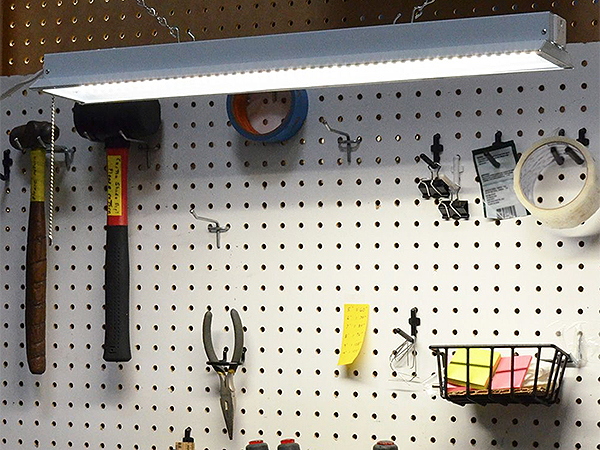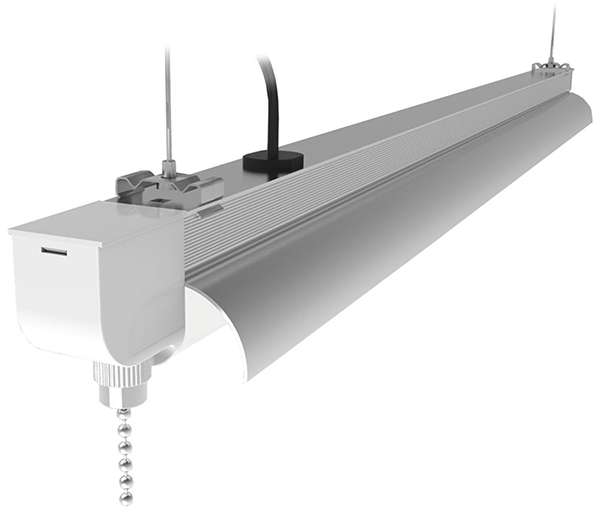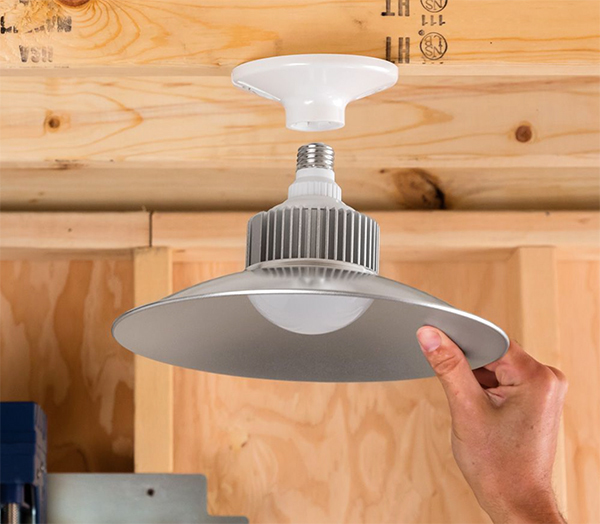
How do you calculate, and what are the standards for, illumination on work surfaces? Are charts available, or, do you just resort to the tried-and-true SWAG (Stupid Wild-** Guess) rule, which then oftentimes leaves you unimpressed with the available light, colors, warmth, visibility, safety, shadows, etc.? I recently visited a home in which the kitchen had been totally remodeled by “experts” who had installed a plethora of small square lights in ceiling fixtures that I thought were totally inadequate for kitchen work. On the other hand, I have visited shops where there was so much extra light that I felt I would have to wear sunscreen all day to work there. How do you determine the right answer? – Roland (Bud) Weisser
Tim Inman: I’m sure there is a standard somewhere, along with testing instruments to measure and calibrate the result. For me, they would be worthless wastes of time and money. Here is my system, which I’ve used for years – decades! I want the light on my work surface to be bright enough I can “see” the texture of paper when I look at it from a convenient working distance away from my eyes. That’s it. It is just that simple, and it works for me. I use a common sheet of white photocopier paper, and I lay it down on the surface where I want to work. Then, especially on my workbench, I move an adjustable lamp so that the surface texture of the paper comes into view. Too bright and it will glare and flare out at me; too low, and I can’t see the paper itself. As time has gone on, I find that a little extra light is usually “helpful.” This “system” is quick and easy, cheap and “do-able.” It is always at the ready, and I have nothing to buy or fix. I hope it works for you, too.

Chris Marshall: In a few clicks you can find lighting calculators on the Internet that will help you determine the “correct” number of lighting fixtures to fill a given cubic-foot area of space with a certain intensity of illumination. I’m sure you’ve already found those, Bud. But, will that be the “right” answer? Can the amount of workshop lighting be generalized for everyone? I’m not sure. I like Tim’s practical solution of illuminating to the point of being able to see paper grain, because it also takes into account that the amount of light you might have needed when working in the shop 10 years ago likely isn’t the same amount of light that you need now. (Once upon a time, I could work under the dim glow of a few lightbulbs in in my basement shop. These days, I’ve got 24 four-foot T8 lamps lighting up my current space, and even that isn’t enough…I’ll probably double this someday.) Honestly, I don’t think I’ve ever visited a workshop that had more light than I could handle. The fewer shadows there are for me to contend with, the better, so I’ll always take more ambient and task lighting! I think the bottom line is, you’re going to need to experiment with your space, obstacles, availability of natural light, methods of work and your own visual challenges to find the right intensity and color of lighting you prefer and need. It might seem like an exercise in SWAG at first, but I’m not sure there’s a better way to achieve your personal ideal for lighting.






